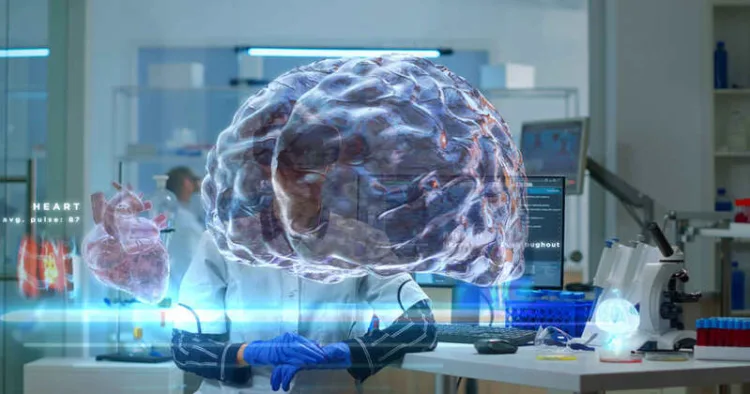In a groundbreaking achievement, researchers at the Indian Institute of Technology (IIT) Madras have developed the world’s most detailed 3D map of the developing fetal brain during the second trimester of pregnancy. This pioneering research provides cellular-level insights into brain development, offering new possibilities for understanding neurological disorders and advancing neuroscience globally.
The newly launched brain atlas, named DHARINI, is a high-resolution 3D representation of the human fetal brain, specifically during the critical developmental window between 14 to 24 weeks of pregnancy. This period marks rapid and significant changes in the brain’s structure and function.
What sets this atlas apart is its ability to detect and predict brain-related disorders, such as autism, much earlier than ever before. Researchers have made this resource open access, enabling scientists and clinicians worldwide to use it freely for research and diagnostics. This initiative is poised to transform the fields of prenatal neuroscience and medical diagnostics.
Introducing DHARINI: The Brain Atlas
DHARINI (Developmental Human Atlas of Regional Imaging and Neuron Integration) is a groundbreaking achievement in neuroscience and brain mapping. It is the largest and most detailed dataset of its kind, providing unparalleled insights into fetal brain growth.
Key Features of DHARINI:
Comprehensive Data: The atlas includes over 5,000 brain sections and maps more than 500 distinct brain regions.
Second Trimester Focus: This period is a critical stage of brain development, and DHARINI sheds light on processes previously hidden from observation.
Unmatched Detail: It provides unprecedented clarity on brain structures and their growth patterns, offering a new lens through which to study human development.
The research team used advanced imaging techniques to create a dataset that challenges prior assumptions about brain development timelines. For example, brain structures believed to form at 14 weeks were found to develop closer to 17 weeks, shifting foundational understanding in neuroscience.
The creation of DHARINI has far-reaching implications for medical research, diagnostics, and technology. It acts as a crucial tool for clinicians and researchers, enabling them to study the complex processes of brain development in unprecedented detail. By focusing on the second trimester, DHARINI sheds light on how the brain’s structure evolves during this critical and dynamic phase of growth, providing insights that were previously unattainable.
This revolutionary atlas also holds immense potential for the early detection of neurological disorders. By offering granular data on fetal brain development, it enhances our understanding of conditions like autism, cerebral palsy, and epilepsy. For example, the atlas reveals how oxygen deprivation (hypoxia) during pregnancy can impact brain development, offering critical clues about the origins of cerebral palsy and similar disorders.
Additionally, the findings from DHARINI may bridge the gap between prenatal development and adult mental health conditions such as depression, bipolar disorder, and schizophrenia. Identifying early markers of these conditions can pave the way for timely interventions, potentially reducing the risk of such disorders in later life.
Beyond medical applications, DHARINI’s detailed understanding of brain development has significant implications for artificial intelligence (AI). By mimicking the human brain’s growth patterns, AI systems can be designed to perform complex tasks more efficiently and with greater sophistication. Together, these advancements position DHARINI as a cornerstone for innovation across multiple disciplines.
The development of DHARINI required a combination of cutting-edge techniques and indigenously developed technology, showcasing the ingenuity and expertise of the research team at IIT Madras. To achieve this remarkable feat, researchers employed advanced imaging techniques, utilising fetal brains from stillborns in the second trimester. These brains were carefully preserved and frozen before being sliced into ultra-thin sections, each measuring just 10-20 microns – thinner than a strand of human hair. These delicate sections were meticulously labelled and imaged under high-powered microscopes, capturing intricate details of the brain’s structure at an unprecedented level of precision.
Additionally, all the instruments and systems involved in the process were designed and developed indigenously by the IIT Madras team. This included specialised technologies for freezing, slicing, imaging, and digitising the brain sections. They also created sophisticated computational tools to assemble the 3D map from the collected data. Together, these innovations have culminated in a revolutionary brain atlas that sets a new benchmark for neuroscience research.
The DHARINI brain atlas paves the way for groundbreaking advancements in research and clinical applications. In clinical diagnostics, it holds the potential to revolutionise prenatal care by enabling the early detection of developmental abnormalities. By identifying issues during pregnancy, timely interventions can be implemented, significantly improving outcomes for both mothers and babies. Additionally, DHARINI serves as an invaluable educational resource for medical students, neuroscientists, and researchers. The open-access nature of the atlas ensures that this cutting-edge knowledge is widely available, fostering collaboration and innovation in the field. On a global scale, the comprehensiveness of the DHARINI dataset is expected to inspire similar projects, allowing researchers worldwide to benefit from its insights and pushing the boundaries of neuroscience research further.
Dr Ashok Kumar, lead researcher on the project, highlighted the collaborative vision behind DHARINI: “This atlas represents years of dedicated work. By making it freely available, we aim to fuel global research collaborations and deepen our understanding of the human brain.”
Dr Priya Ramesh, a neuroscientist familiar with the project, called DHARINI a “game-changer” for neuroscience: “It provides a level of detail that was previously unimaginable. This tool will redefine how we study brain development and disorders.”



















Comments